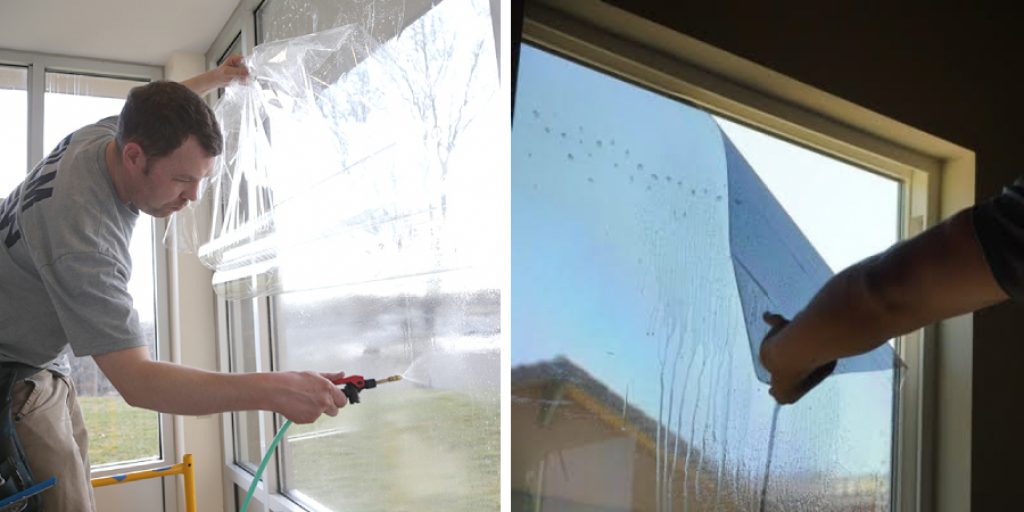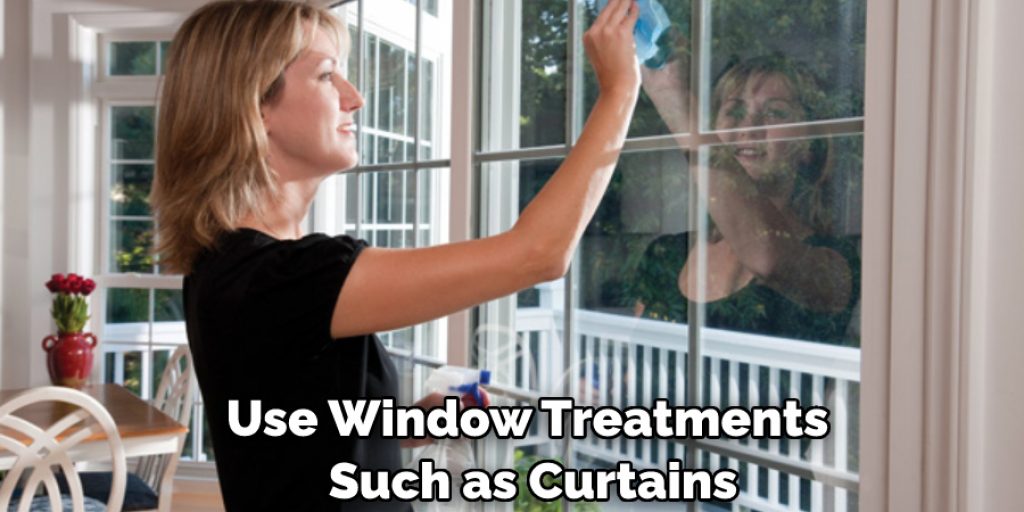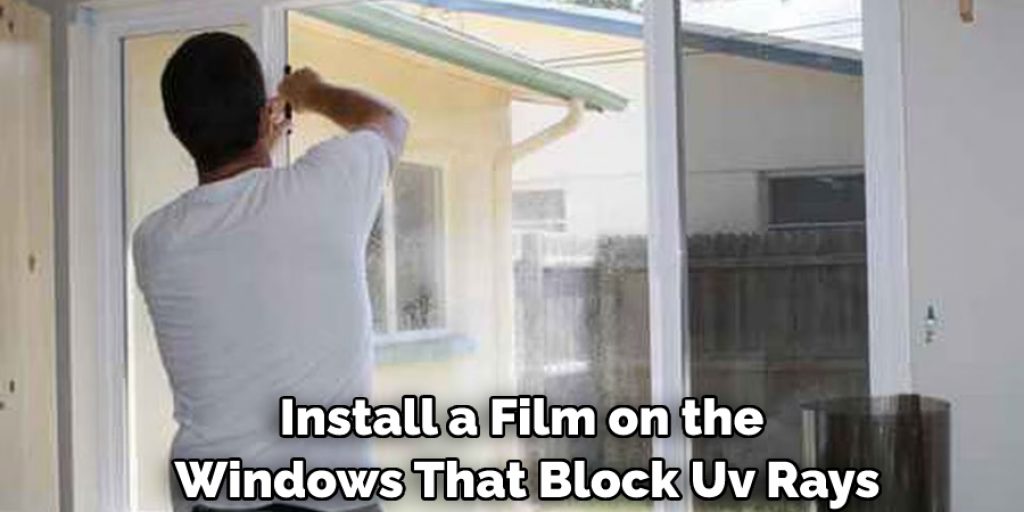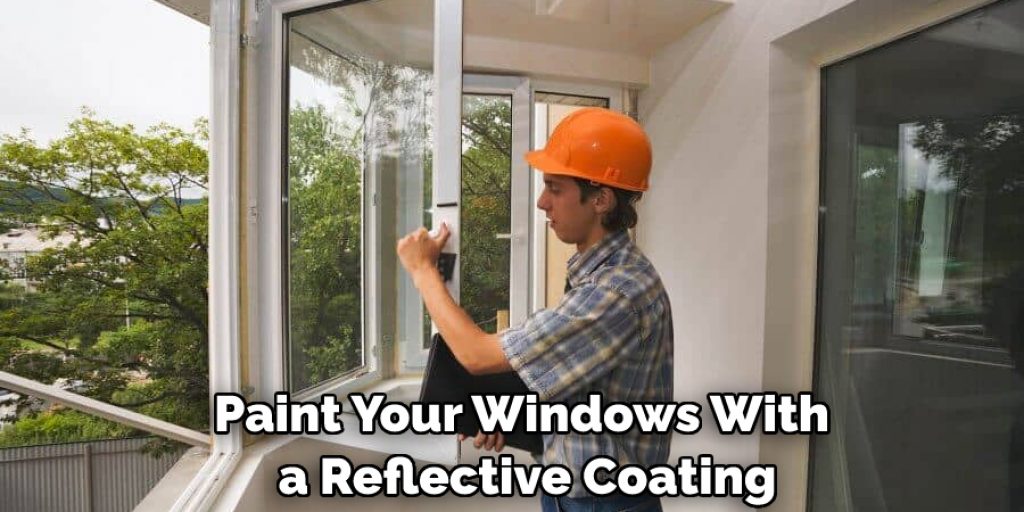How to Reduce Glare From Windows
Glare from windows can be a major source of discomfort, distraction, and even eyestrain while working indoors. Glare can also cause headaches and other discomforts due to the intensity of the light reflecting off a window surface.
Reducing glare is important for improving comfort in any indoor environment, especially when you spend time near windows. The advantages of learning to reduce glare from windows are numerous. First and foremost, reducing glare can improve the overall comfort level of your home by providing a more pleasant and inviting atmosphere.

It also increases your home’s energy efficiency by blocking excess sunlight, keeping the indoor temperature cooler in the summer months and warmer during the winter months. You can find step-by-step instructions on how to reduce glare from windows in this blog article.
Step-by-step Instructions for How to Reduce Glare From Windows
Step 1: Inspect the Window
The first step to reducing glare from windows is to inspect the window and determine what is causing the glare. If it is due to direct sunlight, you may need to consider other options, such as tinting or blackout curtains. Window tinting is one of the most effective ways to reduce glare from windows. Tinted films can be applied to the inside or outside of the window, drastically reducing glare while allowing natural light into your home.
Step 2: Invest in Blackout Curtains
Blackout curtains are heavy, lined curtains designed to block light from entering a room. They are perfect for bedrooms, media rooms, and any other area of your home where you want complete darkness during the day. Blinds and shutters offer a good balance between reducing glare while still allowing some natural light into the room. When closed, they will provide total darkness, and when opened, they will provide ample ventilation as well.
Step 3: Install Window Shades
Window shades are a great option for reducing glare from windows. They come in various materials such as fabric, wood, or bamboo and can be adjusted to allow just the right amount of light into the room. Sheer curtain panels are a great way to reduce glare from windows while still allowing natural light into the room. They can be used alone or in combination with blackout curtains for maximum effectiveness.
Step 4: Replace Glare-Prone Windows
If all else fails, you may need to consider replacing your windows with ones that are better suited for reducing glare. Low-E glass or double-pane windows are designed to reduce the amount of light and heat entering a room while still providing natural light. Regularly cleaning your windows is a great way to reduce glare. Dirt, dust, and debris can all cause additional glare when they are present on windows.
Step 5: Install Window Film
Window film is an adhesive material that can be applied directly to the window glass. It blocks UV rays while still allowing light into the room and can drastically reduce glare. Installing awnings or overhangs can effectively reduce glare from windows as it will provide shade for the window and block out direct sunlight. This is especially useful for south-facing windows that receive plenty of sunlight during the day.

By following these steps, you can easily reduce glare from windows and create a more comfortable living space. Whether you decide to invest in window tinting, blackout curtains, or other options, reducing glare from windows doesn’t have to be a difficult task.
Tips for How to Reduce Glare From Windows
- Use window treatments such as curtains, shades, or shutters to reduce glare and improve the aesthetic appearance of your home.
- Install a film on the windows that block UV rays to prevent sunlight from entering the room.
- Utilize blinds or drapes, which can be adjusted throughout the day according to the intensity of sunlight.
- Paint your windows with a reflective coating or even white paint, this will help diffuse the light entering your room and reduce glare.
- Install awnings over the windows to provide shade from direct sunlight in summer.
- Place screens on the outside of the window to block out strong reflections from the outside.
- Plant trees and shrubs around the windows to provide natural shade.
Following these tips can reduce glare from your windows and make your home a safe and comfortable living environment. Furthermore, these precautions may also help lower energy costs by blocking heat-producing sunlight from entering your home during the day.
What Types of Treatments and Coverings Are Available to Reduce Glare From Windows?
Various treatments and coverings are available to help reduce glare from windows. Window tinting, special reflective films, blinds and shades, curtains and draperies, and shutters can all be used to minimize the amount of light that enters through your windows.
Window tinting is an easy way to reduce glare and is available in a variety of colors and shades to suit your particular needs. Special reflective films are also available and can be applied directly to the window glass. These films have the ability to reflect up to 90 percent of sunlight, greatly reducing glare and heat gain caused by direct sunlight.
Blinds and shades come in a variety of styles and can be adjusted to allow for different levels of light, making them a good option for glare reduction. They are also available in a wide range of colors and textures that can add a stylish touch to any room. Curtains and draperies are another great way to reduce glare from windows by blocking out direct sunlight while still allowing some filtered light to enter the room.
Shutters can be a great way to reduce glare from windows, as they provide full control of light entering through the window. They are available in both interior and exterior versions, so you can find an option that works best for your home’s look and style.
Is There a Cost-effective Way to Reduce Glare From Windows?
Yes, there are several cost-effective ways to reduce glare from windows. The best method to use will depend on the size, shape, and position of your windows, as well as how much light you want to be able to see through them. One option is to install window film or tinting, which can help diffuse incoming sunlight and reduce glare.
The quality of window films can vary, so be sure to read reviews before purchasing. Window films are relatively inexpensive, easy to install, and offer varying levels of protection against UV light, heat, and glare.

Another option is to invest in blinds or curtains for your windows. These help provide shade from the sun’s direct rays and can be adjusted to allow for more or less light depending on the time of day. Blinds and curtains come in a variety of styles, colors, and fabrics, so you can find something that fits your home’s aesthetic.
Finally, if glare is an issue from a specific window orientation, consider investing in window awnings that will provide shade from the sun’s rays. Awnings are available in a variety of shapes, sizes, and materials to fit your needs. They offer additional privacy while still allowing you to enjoy natural light in your home.
What Are the Benefits of Reducing Glare From Windows?
Reducing glare from windows has many benefits, both practical and aesthetic. Glare can cause vision problems, fatigue, headaches, and other distractions that impact your productivity and comfort. Conversely, reducing glare can help to improve the look of a room or workspace by allowing natural light to enter without being obstructed by harsh reflections. It can also enhance the efficiency of artificial lighting and reduce energy costs.
Finally, minimizing glare can help to protect furniture and artwork from fading due to UV exposure. In short, reducing glare from windows is an important step in creating a comfortable and productive environment that looks great and saves money.
Are There Any Risks Associated With Installing Treatments or Coverings to Reduce Glare From Windows?
When installing any kind of window treatment or covering, it’s important to make sure that it is installed correctly and securely. Improper installation can cause the treatments or coverings to come loose and create a potential safety hazard. If you are unsure about how to install your chosen window treatments or coverings, it’s best to consult a professional.
When it comes to reducing glare from windows, there are also potential risks associated with certain treatments or coverings. For example, blackout shades can reduce the amount of sunlight coming in through a window, but if they are not installed properly and securely, the fabric covering could potentially create a fire hazard when exposed to direct sunlight for too long.
Similarly, reflective window films can reduce glare and usually come with instructions on installing them correctly and safely. Overall, it is important to be aware of the potential risks associated with any kind of window treatments or coverings you choose in order to ensure a safe installation.
How Do You Properly Install and Maintain Treatments or Coverings on Your Windows to Reduce Glare?

When it comes to reducing glare from windows, the best way to do so is by installing window treatments or coverings. This could include blinds, drapes, shades, shutters, and more. Each option can be made to fit any size and type of window to provide maximum coverage and reduce the amount of outside light that enters a room.
When installing window treatments, it is important to measure the window frame accurately so as not to leave any spaces or gaps between the treatment and the window. This could lead to more glare entering the room than intended. Additionally, when installing blinds or shades, be sure to adjust them properly so they are angled towards the window.
This will help to deflect and scatter any excess light that may be entering the room from outside. Finally, it is essential to properly maintain your window treatments or coverings in order to keep them working effectively. This includes regularly dusting or vacuuming of the fabric so no dirt or debris can accumulate on it and cause glare.
Are There Any Health Benefits Associated With Reducing Glare From Windows?
Yes, a few health benefits are associated with reducing glare from windows. Glare can cause eye fatigue and strain, leading to discomfort and headaches Additionally, when the sun’s harmful UV rays enter through windows, it can damage your skin and eyes. Reducing glare can help protect your eyes from potential harm while also helping improve visibility.
Additionally, reducing glare can help reduce the amount of energy used to cool your home, as heat from sunlight entering through windows is one of the major contributors to increased air conditioning costs.
By controlling how much light enters your home, you can help keep it cooler and save money on cooling bills. Overall, reducing glare from windows is a great way to improve your home’s comfort and help protect your eyes from potential damage. Additionally, it is important to remember that reducing window glare isn’t just about comfort—it can also add value to a home. Glare-reducing windows can be attractive features for potential buyers and can increase a property’s overall marketability.

Conclusion
The main disadvantage of reducing glare from windows is that it can interfere with natural light entering the room. As such, this technique should be used in moderation and during times when the sun is at its brightest. Additionally, using window treatments to reduce glare can also decrease a room’s privacy, as it can make it more difficult for someone to see outside.
In conclusion, to reduce glare from windows, it is important to consider the various available solutions. Using window films, tinting, and blinds can help reduce the amount of sunlight that enters through a window, while special coatings or films can be applied directly to windows to further block out light and glare. In addition, making sure your windows are clean and free of dust can help reduce glare. I hope reading this post has helped you learn how to reduce glare from windows. Make sure the safety precautions are carried out in the order listed.




